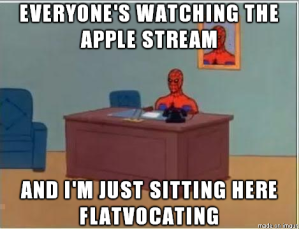If you’re transitioning to a flat structure, you HAVE to expect growing pains. Especially if you’re top-down implementing the change, you’ve got a really weird maze to navigate. Your final directive is that you can’t give any more directives. What happens when you get really passionate about a project? Is the rest of the company just going to bow out instead of fighting you if they feel it’s a bad idea?
There needs to be a bunch of education. I know that the Toyota Way talks about “stopping the factory so the factory never has to stop,” but I work in EMS. I don’t think about factories, I think about patient outcomes. I learned about Crew Resource Management from David Page ( http://twitter.com/davidpage ), and it’s the best framework I can find for easing your way into a flat organization.
At its most basic, Crew Resource Management means anyone can say “no go”. It comes from airlines, where everyone from the baggage handler to the air traffic control can decide that a plane isn’t flying today. Not only CAN they make that decision, but they are expected to.
In a company, and again, my experience is entirely in software, team members have to be empowered to say “No Go”. If you’re trying to transition to a flat organization, during planning meetings or any time when a major decision is made, take the time to ask the room “Is there any reason we’re not flying today?” Train your team that there is a difference between “I do not understand why we are doing this” versus “I think we shouldn’t do this”. Be willing to ask, when there is passionate discussion, if either side is saying “No Go”.
As an executive, you’ve actually got it tougher than the rest of the company. You need to be willing to back down off your fights earlier than you’d want the rest of the team to do it. You should eventually be just another member of the team whose role just happens to be strategic vision, talent acquisition, and business security. Early on, no one is going to have internalized that. You’re still the person who can fire them.
I’ve had to work with our CEO to get him used to having to walk back from lines of “what if we…” questioning. He thinks he’s just brainstorming. The teams he works with end up taking a line of pointed questions as implicit direction. Sometimes, you need someone in the room to straight up ask “is this an executive trump or are you just asking?”
It sucks. As the CEO, you’ve probably got more business acumen and specialized knowledge than anyone else in the room. And you might have the exact right way to do something. But by going flat, you’re telling the rest of the company that you trust them to make decisions. Like in parenting, sometimes that means you need to let them make mistakes. Obviously, if it’s going to be a gigantic failure, you need to exercise your own rights within Crew Resource Management and speak up—but there are times when, for morale, you need to fall on your sword. It’s World Cup time, so maybe I should say “take a dive”.
This isn’t just for executives. It’s for Product Owners and Scrum Masters (or project people and wranglers, if you’re not doing Scrum). If you’re in the transition from hierarchy to flatness, you have to be willing to lose some fights, even if you care a lot. You have to let your team HAVE the autonomy we claim we want to give them. Yes, you’re entitled to your own opinion and right to fight for your ideas. No, it’s not as important that you win as that the team gets used to collaboration.
The move to flatness is rough. Beyond the things I talk about above, you also have personnel mismatches, technology issues/siloing, and even over-communicating. I’ll dedicate future posts to those topics of course.
Let me know what’s working on the blog. I can cover whatever topics people want, and I’m happy to host posts from people who dissent or want to expand on what I’ve put up.
—
ADDENDUM:
This post felt really bleak. It shouldn’t be. Flat being hard doesn’t mean it isn’t worth it.
My best friend, Eryn ( http://twitter.com/eryno ), is much much smarter than me. She condensed my philosophy about transitioning to Flat/Agile methods into eleven words.
“I got done being bad at it. And now I’m good.”
She was talking about our shared experience of being high school speech team competitors (because theater wasn’t lame enough), but it applies to implementing a flat or agile scheme.
You just have to fucking do it. You’re going to be really bad at it. You are not going to magically NOT be bad at it if you wring your hands and over-engineer it for months before trying it out. You are going to make mistakes. Your executives are going to swoop and poop all over team-driven projects. Meetings are going to be too crowded with too many people who don’t need to be there.
It will seem like a shitshow at first. You’re going to want to re-engineer a whole system of roles and regulations. Don’t.
You don’t know what you need yet. You’re going to be bad at it, and that’s going to teach you the small adjustments you need to make to nudge the org in the right direction.
Then you’ll be done being bad at it. And you’ll be good.
